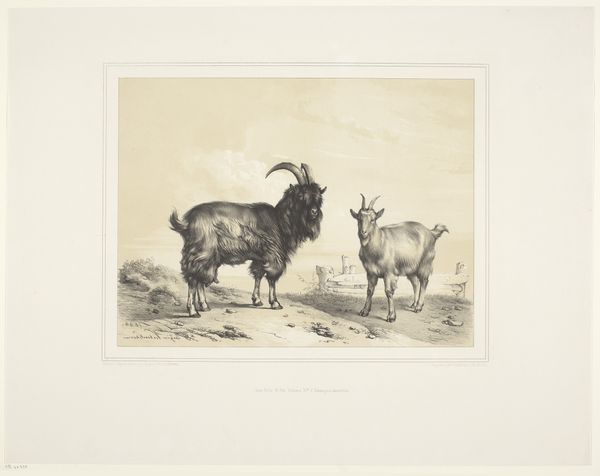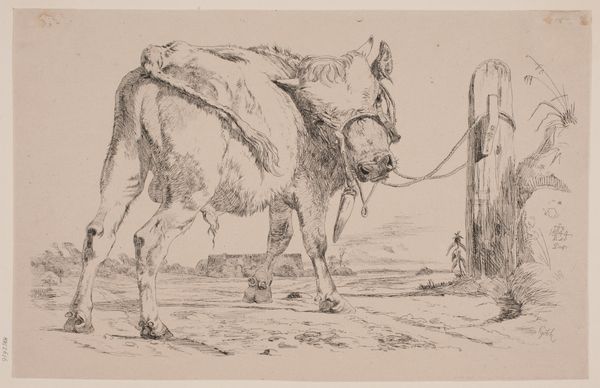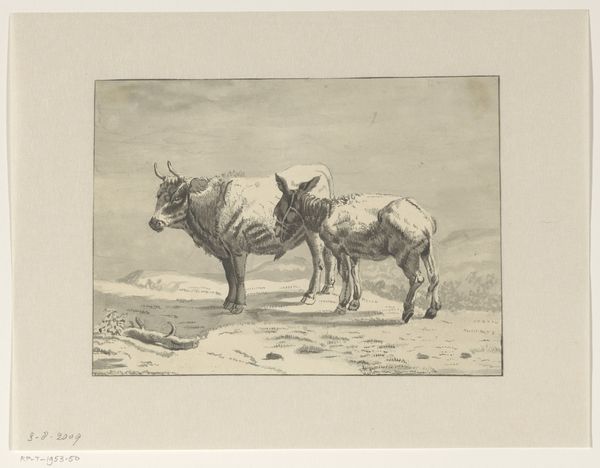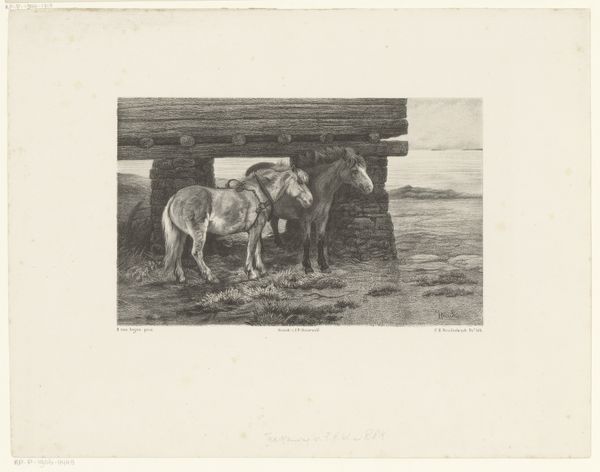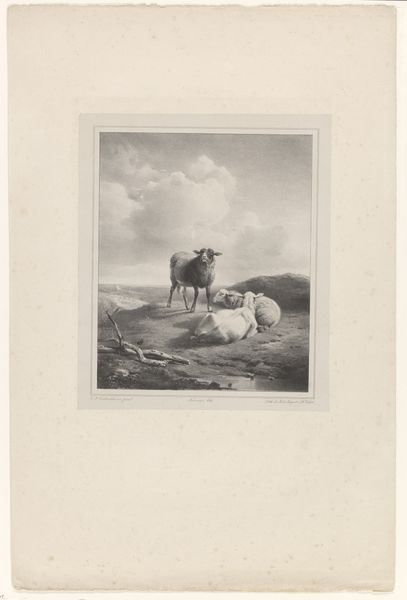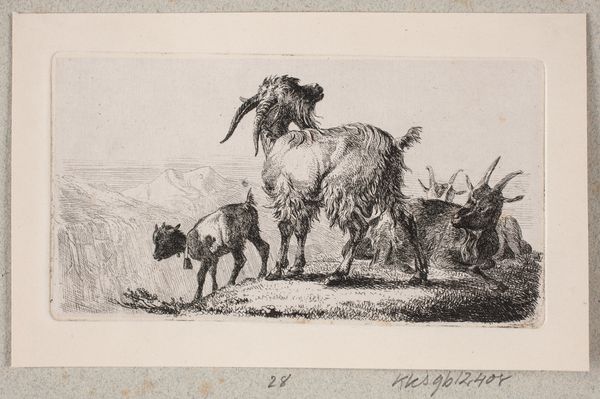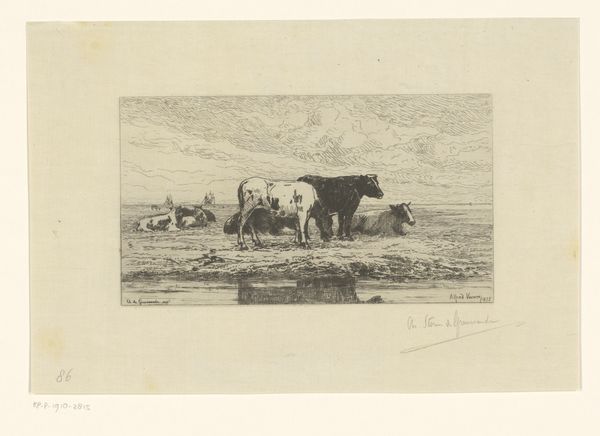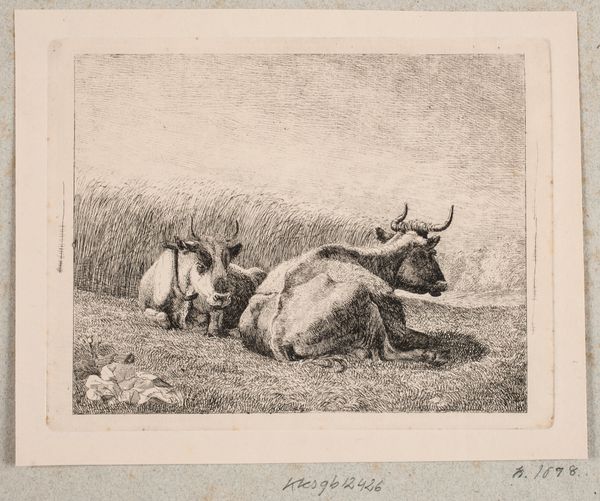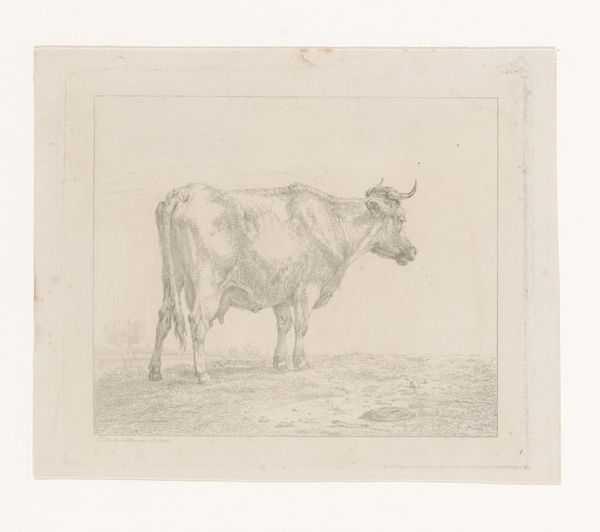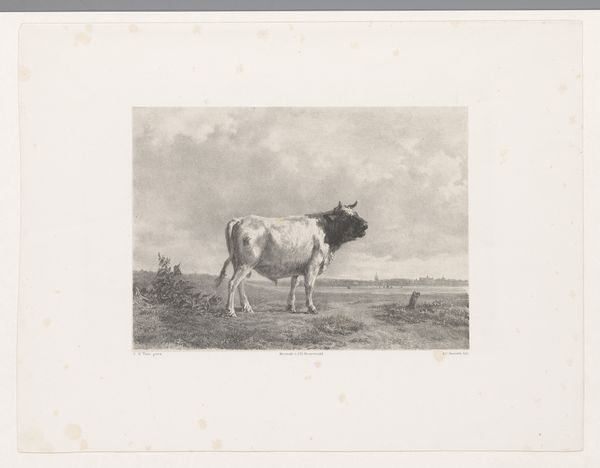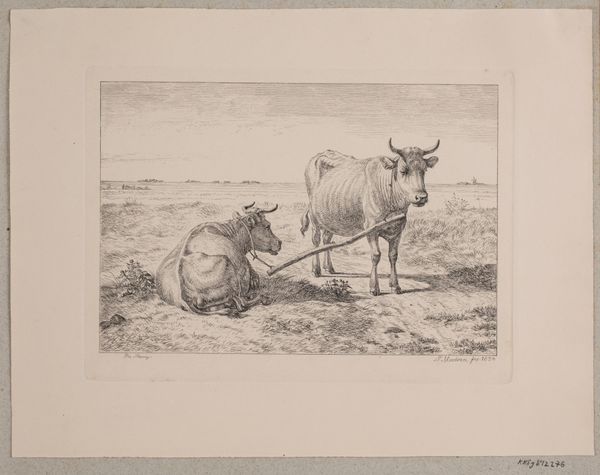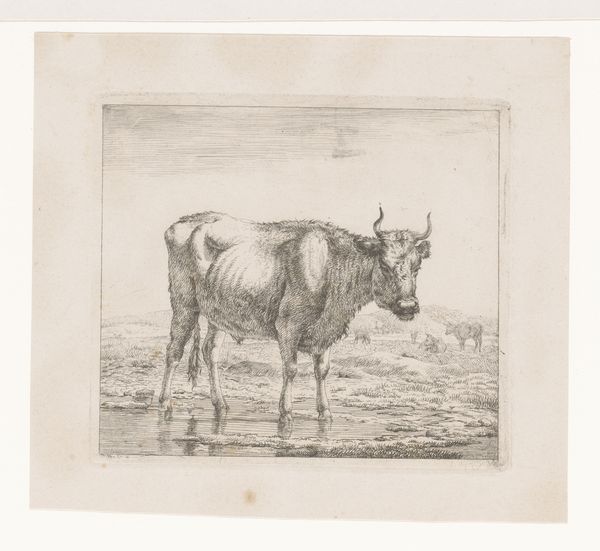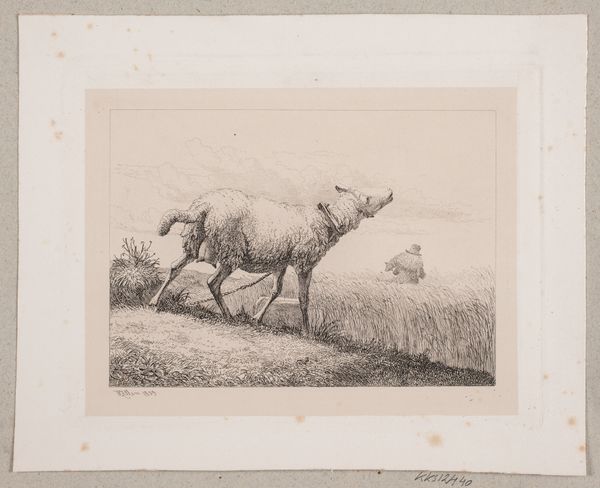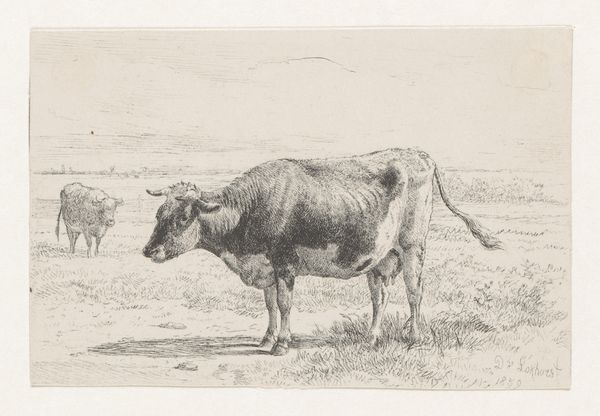
Dimensions: Chine: 23 1/4 × 35 1/2 in. (59 × 90.1 cm) Plate: 24 7/16 × 36 1/2 in. (62.1 × 92.7 cm) Sheet: 23 1/4 × 35 1/2 in. (59 × 90.1 cm)
Copyright: Public Domain
Editor: "The Scapegoat" by Charles Henry Mottram, completed in 1861. This work, rendered in charcoal and print, possesses a starkness that’s immediately apparent, amplified by its monochromatic palette. What formal elements stand out to you upon your initial observation? Curator: The immediate tension arises from the goat’s isolation in the fore, sharply juxtaposed against the desolation of the backdrop. Note how the meticulous detailing of the goat’s fur draws the eye, emphasizing its texture. How do the linear qualities of the landscape's rendering contribute to the emotional weight? Editor: I'd say that the horizontal lines of the landscape give it a sense of stillness, contrasting the more fluid strokes depicting the goat’s hair. What purpose do you think the cracked earth beneath the goat's feet serves? Curator: Its purpose resides primarily in its contribution to the visual rhythm and textural contrast within the piece. Consider the subtle diagonals in the foreground – do they counteract the stability of the horizontal lines, perhaps unsettling our perception? Editor: I can see how it draws your eyes towards the left, mirroring the goat’s gaze. Are there any other features that serve that same structural role? Curator: Note the mountains; they anchor the upper register, providing a visual counterweight. They serve to further isolate the figure, trapped between earthly decay and heavenly remove. Does this contrast enhance or detract from the formal cohesion, in your estimation? Editor: I believe it highlights the goat’s forlorn presence. I see your point. I hadn't noticed the arrangement of lines earlier, I now appreciate how they balance the composition, driving its feeling of desolation home. Curator: Indeed. Recognizing how form shapes our emotional and intellectual understanding is essential for comprehending artworks like this.
Comments
No comments
Be the first to comment and join the conversation on the ultimate creative platform.
